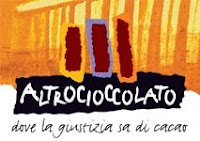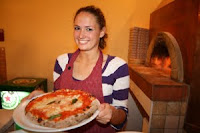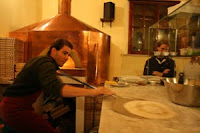Umbra Institute Art History Professor Adrian Hoch, working with previously unpublished documents, has written an intriguing paper on a fourteenth century tabernacle.
In mid-fourteenth century Florence, a man who later was declared a beato, the Blessed Chiarito del Voglia experienced visions which forecast the continuation of the Augustinian nunnery he had recently founded, called Santa Maria Regina Coeli. Drawing on both a contemporary painting in the Getty Museum and previously unpublished documents from the early seventeenth and  eighteenth centuries on this very local and quite unusual medieval Florentinebeato, Umbra Institute Art History Professor Adrian Hoch has written a significant paper which will be published in the journal of the prestigious Kunsthistorisches Institut in Florence.
eighteenth centuries on this very local and quite unusual medieval Florentinebeato, Umbra Institute Art History Professor Adrian Hoch has written a significant paper which will be published in the journal of the prestigious Kunsthistorisches Institut in Florence.
Hoch, who worked in the Getty Museum in 1985 and did the research for the acquisition report on the painting, discusses in her paper (provisionally titled: ” New Notices from the Florentine Baroque on the Trecento Chiarito Tabernacle) the personal eucharistic visions of the Blessed Chiarito del Voglia, which were literally and physically related to food, as represented in the painting done by Pacino di Bonaguida. The Chiarito Tabernacle will be part of an exhibition on Giotto and early fourteenth century Florentine painting scheduled to open at the Getty Museum in 2012.
The Umbra Institute congratulates Professor Hoch for her work and for her dedication to both teaching and continuing scholarship.


 Though the tents that shelter all the stands haven’t started appearing yet in Corso Vannucci, the Eurochocolate “Festival” isn’t far away. Perugia’s famous for that felicitous marriage of cocoa, milk, and sugar because of the long tradition of chocolate here (beginning with the Perugina Confectionery Company, born over a hundred years ago), and the city rightly becomes the temporary capital of dark sweetness every October.But this year, as for the past ten years, there will be an alternative to the fast-food approach to chocolate.
Though the tents that shelter all the stands haven’t started appearing yet in Corso Vannucci, the Eurochocolate “Festival” isn’t far away. Perugia’s famous for that felicitous marriage of cocoa, milk, and sugar because of the long tradition of chocolate here (beginning with the Perugina Confectionery Company, born over a hundred years ago), and the city rightly becomes the temporary capital of dark sweetness every October.But this year, as for the past ten years, there will be an alternative to the fast-food approach to chocolate.



 With a needle and thread in hand, students began sewing their very own Pigotta doll for UNICEF, the United Nations Children’s Fund. Every week, student volunteers will work towards creating these special handmade dolls, the very symbol of UNICEF in Italy. Each doll helps raise enough money to fund a vaccine kit protecting a child against deadly diseases in developing countries.
With a needle and thread in hand, students began sewing their very own Pigotta doll for UNICEF, the United Nations Children’s Fund. Every week, student volunteers will work towards creating these special handmade dolls, the very symbol of UNICEF in Italy. Each doll helps raise enough money to fund a vaccine kit protecting a child against deadly diseases in developing countries.
